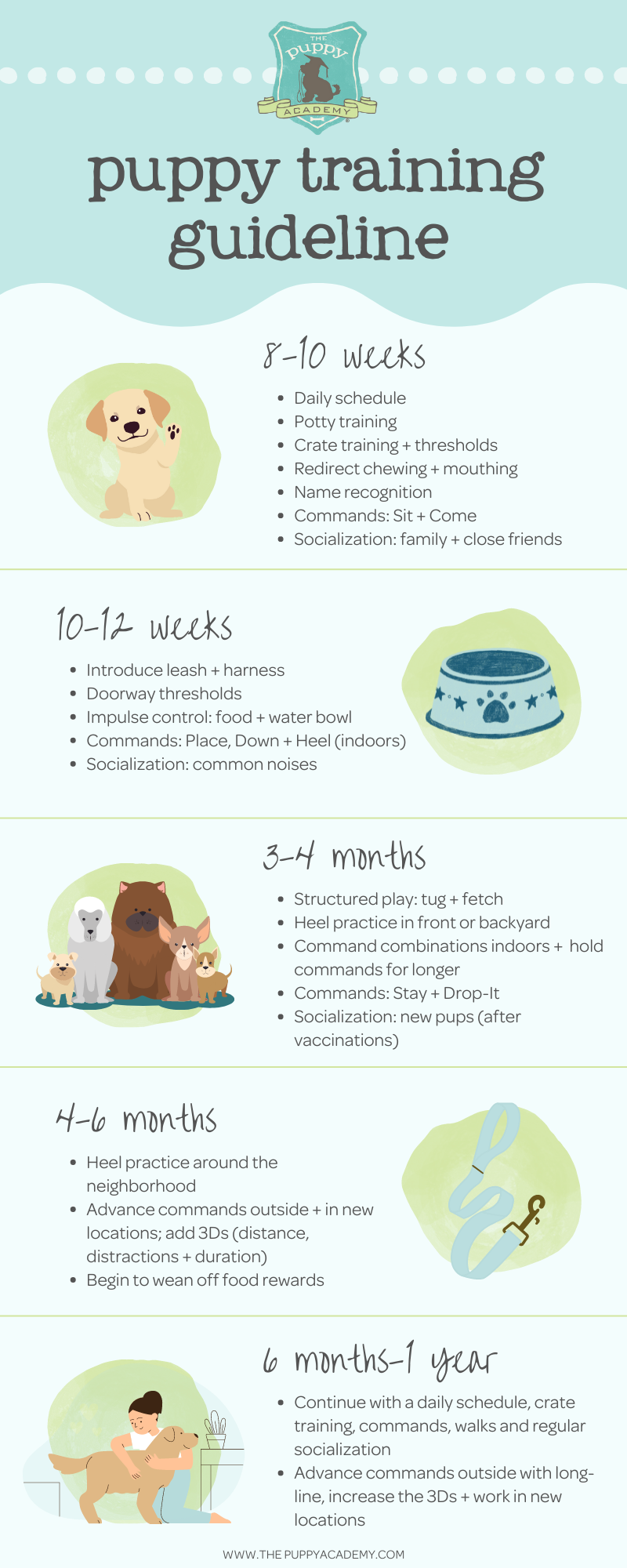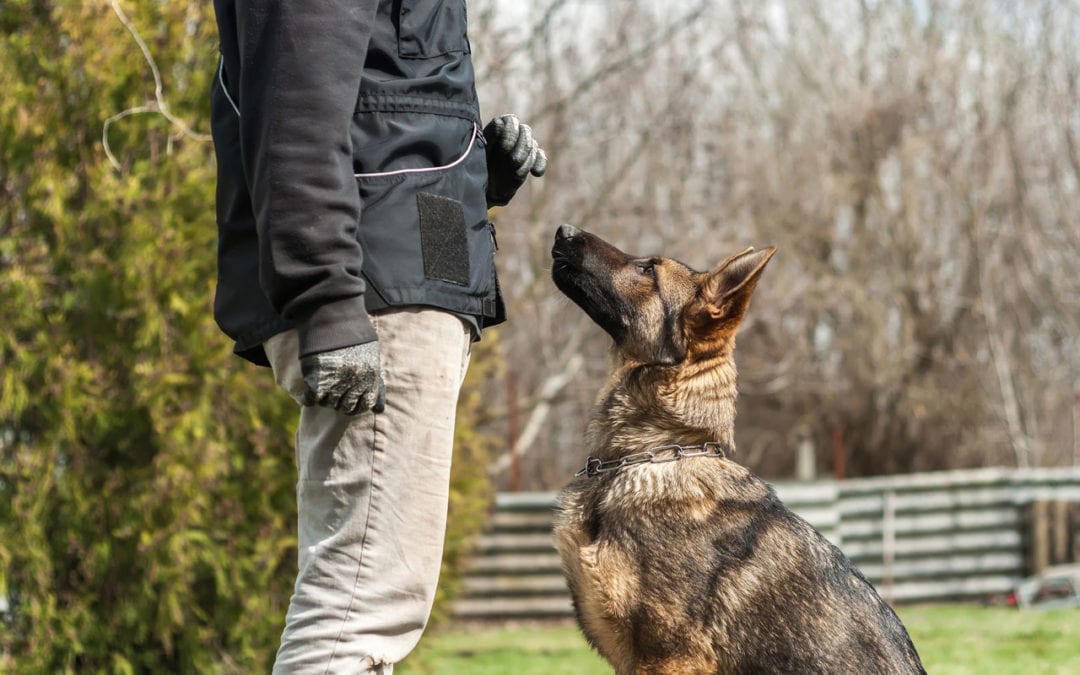Puppy Training 101: How to Start Teaching Your New Pup Right Away
Wiki Article
Top Puppy Training Techniques to Guarantee a Mannerly Pet Dog
Efficient puppy training is critical for cultivating a well-behaved buddy, and various strategies can considerably affect a pet dog's development. As we discover these methods better, it ends up being clear that the success of pup training hinges on a combination of methods that can transform your pet dog's behavior in impressive means.Positive Support Methods
Making use of positive reinforcement methods is vital for reliable pup training, as it urges desired behaviors through incentives instead of punishment. This approach takes advantage of on the all-natural knowing procedures of pets, reinforcing etiquette by offering concrete and prompt rewards, such as treats, appreciation, or play. By linking positive results with certain activities, pups are most likely to duplicate those actions in the future.Reliable favorable support entails timing and uniformity. Incentives need to be offered immediately after the desired behavior strikes create a clear connection in the puppy's mind. Additionally, differing the types of benefits can preserve a puppy's interest and inspiration throughout the training procedure. As an example, some young puppies may respond better to verbal appreciation while others might favor a favored plaything or treat.

Uniformity in Training Commands
Preserving uniformity in training commands is essential for reinforcing the lessons discovered via positive reinforcement methods. Pet dogs grow on routine and predictability, so utilizing the very same spoken commands and hand signals for specific habits is crucial. This uniformity helps young puppies comprehend what is anticipated of them, reducing confusion and stress for both the fitness instructor and the family pet.
Timing additionally plays a considerable function in consistency. Commands need to be supplied quickly during training sessions and adhered to promptly by positive reinforcement, such as deals with or appreciation. This instant response aids solidify the organization between the command and the desired habits.
Incorporating uniformity into training sessions will certainly produce a secure understanding atmosphere, advertising quicker mastery of commands. Inevitably, a well-structured technique promotes a strong bond in between the puppy and its proprietor, resulting in a more mannerly and loyal pet.
Socializing With Other Pet Dogs
Socialization with various other pets is critical for a read what he said puppy's growth, as it helps them discover ideal habits and interaction skills in varied social contexts. Very early interactions with different pets can significantly affect a pup's temperament and versatility in numerous situations. When young puppies are subjected to a selection of animals, they come to be extra confident and less frightened, which can prevent potential behavior concerns later on in life.
Instruct your puppy to acknowledge signals from other family pets, such as signs of playfulness or pain, fostering common respect and understanding. Normal socialization not just enhances your pup's social skills however also adds to their total wellness, creating a much more unified living atmosphere.
Pet Crate Training Advantages
Identifying the various benefits of cage training can substantially enhance both the pup's and owner's experience. Crate training gives a risk-free and safe and secure environment for young puppies, guaranteeing they feel secured when laid off. This complacency can significantly decrease anxiousness and stress levels for both the owner and the animal.In addition, pet crates work as an important house-training device. Pups naturally avoid dirtying their sleeping area, thus motivating them to hold their bladder till they are allow outdoors. This reaction can expedite the housebreaking process, promoting great routines beforehand.
When not being watched,Crate training additionally assists in taking dig this care of a pup's actions - puppy training. By giving a marked room, proprietors can stop devastating actions, such as eating on furnishings or entering damaging compounds. Crates can be advantageous throughout traveling, using a familiar room that can aid soothe a puppy in new settings.
Finally, establishing a crate regular motivates self-reliance, allowing puppies to find out exactly how to be alone without worry. In general, crate training is a reliable approach for promoting safety, peace, and self-control, leading to a well-adjusted, mannerly pet.
Chain Training Essentials
Leash training is an essential aspect of accountable pet possession that ensures a satisfying and secure walking experience for both the pup and its owner. Correct chain training begins early, preferably during the young puppy's socialization period. When out in public., this training aids develop excellent practices and promotes positive habits.To start, pick a comfortable collar or harness that fits your young puppy well. Affix a durable chain, guaranteeing it is not too long, as this can result in pulling and irregular actions. Start in a peaceful atmosphere to decrease distractions and slowly introduce your pup to brand-new environments.
Use positive reinforcement techniques, such as treats and praise, to motivate your young puppy to stroll close to you. If your pup pulls, stop walking and wait for them to return to your side before continuing. This teaches them that pulling will not yield forward movement. Consistency is key; practice on a regular basis and continue to be person, as proficiency requires time.
In addition, include brief training sessions with enjoyable disturbances to develop your young puppy's focus. With dedication and persistence, chain training will certainly lead to a hospitable companion, making walks delightful for go both the owner and the puppy.
Verdict
In final thought, employing reliable young puppy training techniques is vital for establishing a mannerly pet. Generally, these methods collectively advertise an unified connection in between puppies and their owners.As we check out these approaches further, it ends up being clear that the success of pup training hinges on a combination of methods that can change your animal's actions in remarkable ways.
Using favorable support techniques is vital for reliable pup training, as it encourages preferred habits via incentives instead than punishment.Crate training also helps in handling a young puppy's actions when unsupervised.Leash training is a fundamental aspect of accountable family pet possession that makes sure a pleasurable and risk-free strolling experience for both the young puppy and its owner.In final thought, utilizing efficient young puppy training methods is vital for creating a mannerly family pet.
Report this wiki page